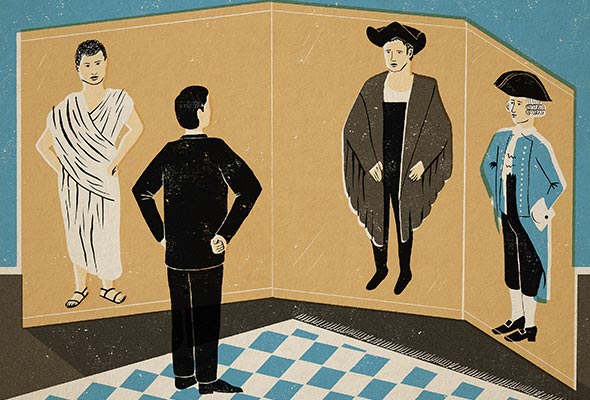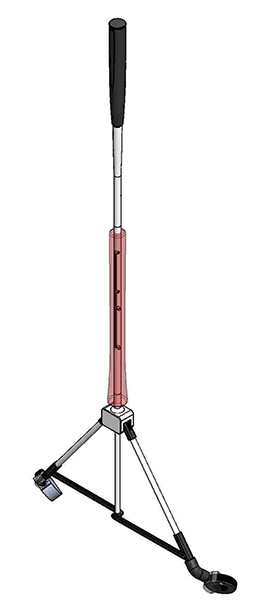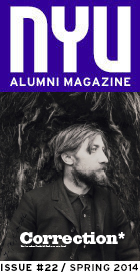
marketing
Do Look Back

The best predictor of the future is usually the past. Noted astrophysicist J. Richard Gott realized this when he formalized a method for predicting how long something—human civilization, the Berlin Wall, a Broadway show—would last. Lacking any special knowledge, assume you’re at the midpoint of its lifespan: If it’s been here a spell, you can bet it’ll be around a while longer. Hal E. Hershfield, an assistant professor of marketing in the Leonard N. Stern School of Business, suggests we unconsciously apply this principle to the age of our country, and that it affects how we treat the environment.
For a recent paper published in Psychological Science, he and two collaborators looked at the environmental performance of countries around the world and found that the oldest nations had cleaner air and water, and a healthier ecosystem, even after they accounted for government stability and gross domestic product. Presumably, people in countries with longer histories looked further ahead and were willing to make important trade-offs to protect that future.
In a companion experiment, the researchers showed people timelines comparing the founding of the United States to either the beginning of the Roman Empire (making the U.S. seem young) or Columbus leaving Spain in 1492 (making it seem old). Participants cued to think of the United States as old were willing to donate more of their study payment to an environmental cause.
“The running paradigm in climate-change communication has been to tell people about these doomsday, end-of-world scenarios,” Hershfield says. This research suggests that a more subtle and effective way to encourage environmental stewardship is “to get people to appreciate the richness of their past, and to use that to project forward into the future.”
—Matthew Hutson
public policy
Open Up and Say “Aye”
by John Bringardner / GSAS ’03 / and Matthew Hutson
If you want the federal government to build a Death Star, you have to do more than simply suggest it. A petition on the White House’s We the People website has 34,435 signatures urging the creation of this hybrid space station/super weapon, but even an entire nation of supporters wouldn’t be enough, according to Beth Noveck, the Jacob K. Javits visiting professor at NYU’s Robert F. Wagner Graduate School of Public Service. “Even if the government wanted to build a Death Star,” she says, “a petition provides no practical, implementable guidance about how to do so.”
As the country’s first deputy chief technology officer under President Obama and the mind behind We the People, Noveck was responsible for vetting those petitions. The Death Star idea was officially rejected for reasons including that “the Administration does not support blowing up planets,” but many other proposals, from reducing gun violence to protecting Internet freedoms, have traveled this online avenue directly to the president’s ear.

Noveck is part of a new breed of technocrats devoted to exposing the public to the mechanics of governance in order to make it more effective and innovative; this is one way she has helped to put into practice the principles she advocated in her 2009 book, Wiki Government: How Technology Can Make Government Better, Democracy Stronger, and Citizens More Powerful (Brookings Institution). For the past decade, her multifaceted projects have centered on the idea of learning from the private sector to create public solutions and how to use technology to engage communities in solving problems.
After brainstorming with a network of 45 other like-minded luminaries—including Joi Ito of MIT’s Media Lab, Jennifer Pahlka of Code for America, and fellow NYU professor Clay Shirky—Noveck founded the Governance Lab at NYU in 2012. “I’m not trained as a technologist,” Noveck says. “I’m a law professor with a background in political theory. GovLab is an action and research initiative that looks at what’s working and why. Because we’re situated in a university and are not simply private-sector technologists, we have the ability and the mission to develop tools for the public good.”
Two examples of GovLab’s theories in action: PulsePoint, an app that lets 911 operators alert trained CPR users in a caller’s area, and a project to help the World Bank’s water-development division redesign its procurement process to deliver clean water to the poorest people in the world. “It’s not simply about a technology platform or a piece of software—should we use Salesforce or Google?—this is a question of, what are the policies that might impede getting at good ideas faster,” Noveck says.
GovLab encourages the public to consider whether there are ways to reimagine the term democracy in light of scientific and technological advances. “If we can transform the nature of citizenship into something active and engaged,” Noveck says, “where governments collaborate with people by tapping their intelligence and expertise, we can forge new democratic institutions that are both more effective and more legitimate.”
medicine
Cane and Able

In the past few decades, tools for the visually impaired have vastly improved. Braille displays are ubiquitous, and computers that interpret voice commands are the rule rather than the exception. But the walking cane, arguably the most crucial implement for those with sight issues, has not changed since the 1940s. “From a mobility standpoint, we’re stuck in the World War II era,” says John-Ross Rizzo (CAS ’04), an assistant professor of rehabilitation medicine at NYU Langone Medical Center. “It’s about time we start disrupting things.” Rizzo has invented a new walking aid, the CumbaCane (rendering pictured), that is poised to do some disrupting on a global level.
The device has two arms at the end that splay open and hold small wheels. Instead of swinging a stick back and forth as users walk, missing huge swaths of the path, one pushes the CumbaCane straight ahead. The wheels pick up on cracks and curbs—two of the greatest dangers to the visually impaired—and a horizontal bar between them hits low-lying obstacles.
Rizzo became interested in reduced vision as a teenager, in part due to his own deteriorating retinas. He later started sketching designs for a cane and then building prototypes; he had one intern buy half a dozen old drum stands from a music store so they could play around with the folding legs. A friend tried an early version and made it around the block with zero training. That same friend then used Rizzo’s traditional cane for comparison and fell off a curb. “Once that happened, I knew we had something,” Rizzo says.
In the United States alone, more than 4 million people are legally blind, and this group suffers a two- to threefold increase in falls. Furthermore, due in part to their lack of mobility, they’re at approximately twice the risk of obesity, diabetes, and stroke. What’s more, poor eyesight “tends to want to turn you into a recluse,” as Rizzo has learned from personal experience. “Why do I want to trip one more time?” Available later this year through his company, Tactile Navigation Tools, for less than $100, the CumbaCane will undoubtedly alleviate some of these problems.
Rizzo is also developing what he calls an EYEronman system. It sends data from ultrasound, infrared, and other sensors on a vest to a grid of vibrating polymers on an undergarment. Together they create a tactile map of the outside world on the wearer’s chest and back. The device is meant for the visually impaired, as well as firefighters and soldiers. To give people a “sixth sense” with this type of technology and thereby increase their independence, Rizzo says, “is really my ultimate utopia.”
—M.H.





